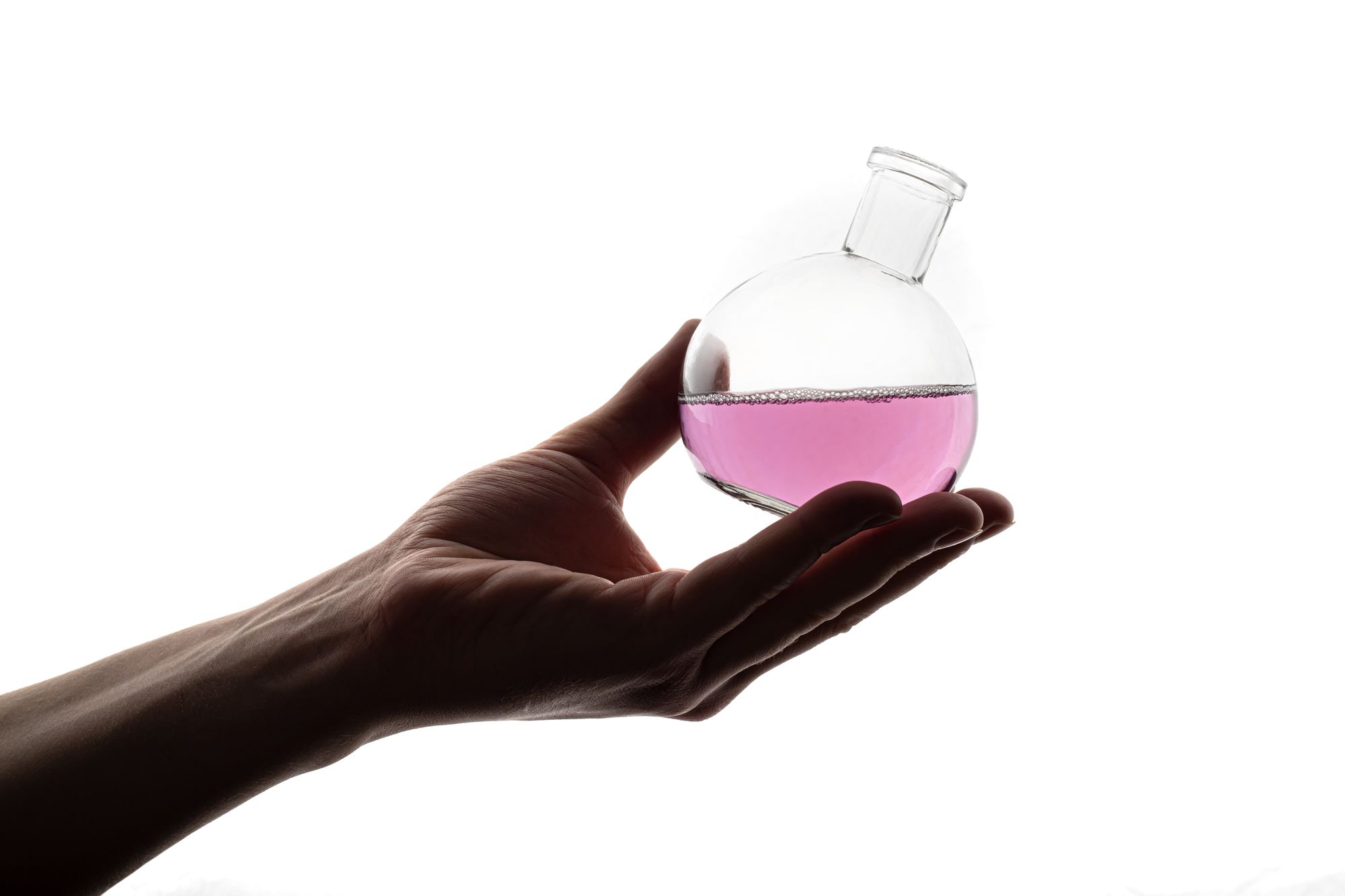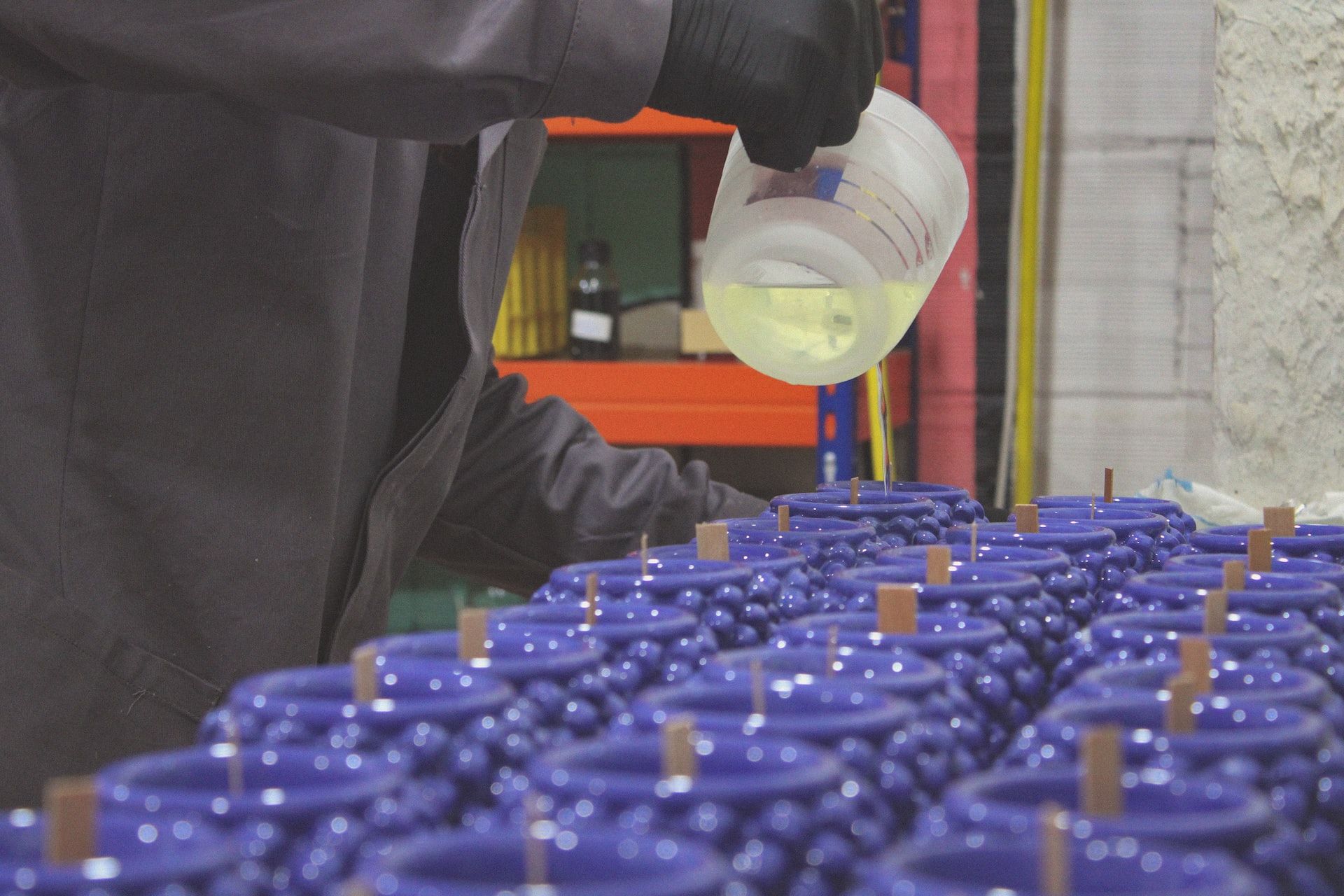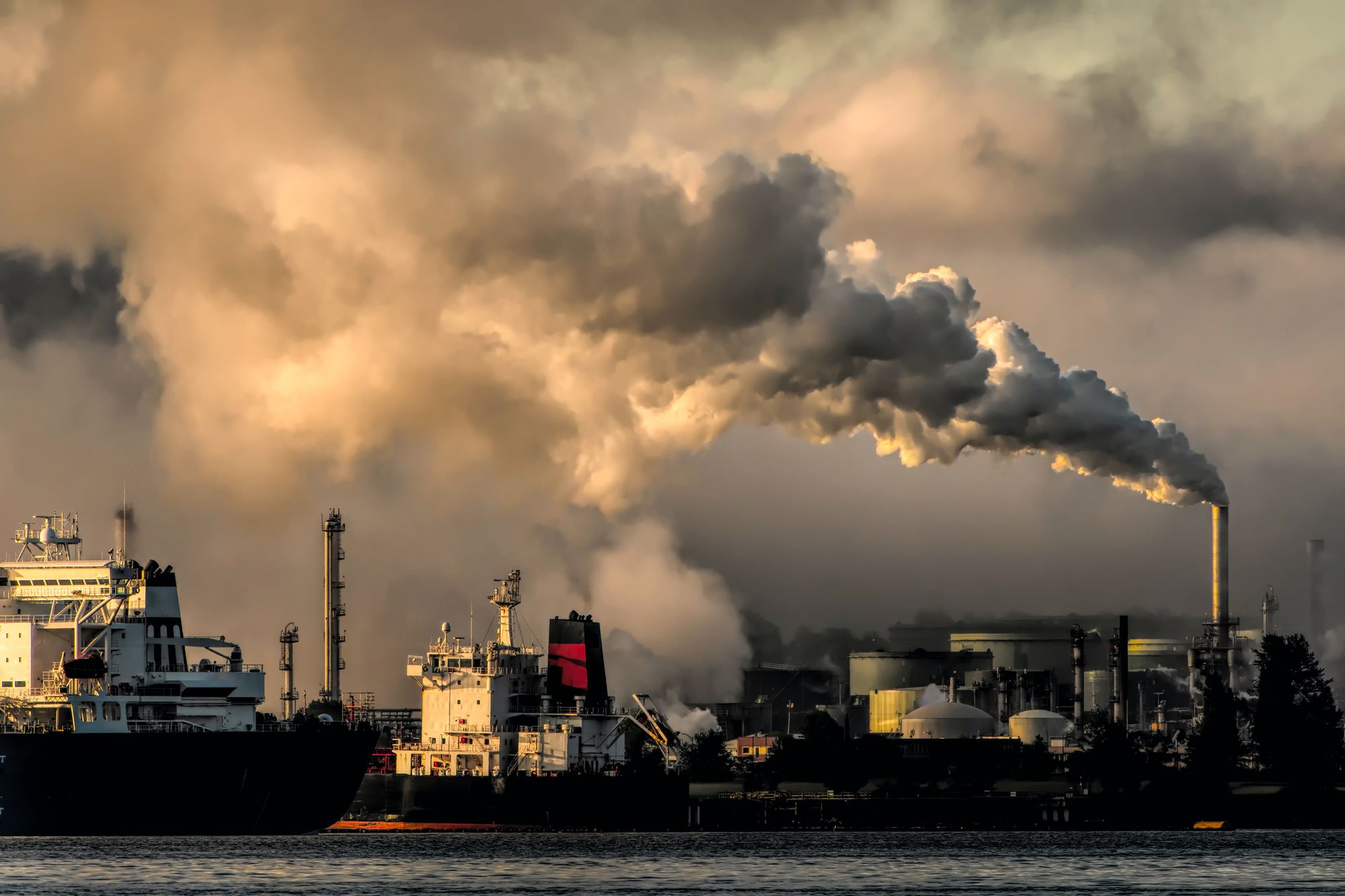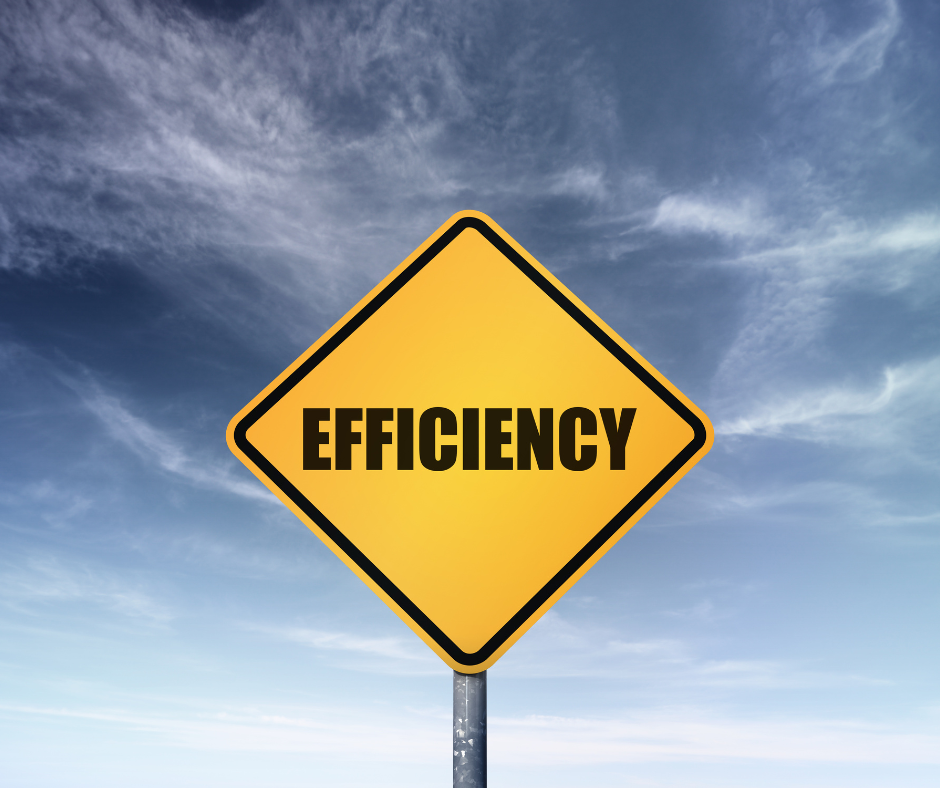Chemical manufacturing is a complex and highly competitive industry, in which maximizing the yield of the desired product is critical to success. Yield is the amount of desired product obtained from a chemical reaction, expressed as a percentage of the theoretical maximum yield.
Maximizing yield is a key objective of chemical manufacturing, as it can reduce production costs, increase profitability, and ensure that the product meets the required specifications. However, achieving high yields can be challenging, as it requires careful optimization of reaction conditions, purification methods, and equipment selection.
In this article, we will explore some of the strategies that can be used to maximize yield in chemical manufacturing, and the importance of yield in this industry.
We will also examine the challenges that can arise when trying to achieve high yields, and the role of modern technologies and tools, such as catalysts, ERP systems, and process simulation software, in optimizing chemical processes.
By understanding the factors that affect yield and implementing the appropriate strategies, chemical manufacturers can achieve greater efficiency, higher quality products, and greater competitiveness in the global marketplace.
Let’s take a look at the table of content before we get started:
- Meaning of Yield in Chemical Manufacturing
- Significance of Maximizing Yield in Chemical Manufacturing
- Ways to Maximize Yield in Chemical Manufacturing
- Strategies to Maximize Yield in Chemical Manufacturing
- Challenges that Arise when Trying to Achieve High Yields in Chemical Manufacturing
- Some Common Methods to Measure Yield in Chemical Manufacturing
- Role of Modern Technologies and Tools in Optimizing Chemical Processes
- Frequently Asked Questions Related to Maximizing Yield in Chemical Manufacturing
- Wrapping Up
- How Deskera Can Assist You?
Meaning of Yield in Chemical Manufacturing
In chemical manufacturing, yield refers to the amount of product obtained at the end of a chemical reaction or process, expressed as a percentage of the theoretical maximum amount that could have been produced.
For example, if a chemical reaction is expected to produce 100 grams of a particular product, but only 80 grams of the product are obtained, the yield would be 80% (i.e., (80/100) x 100%).
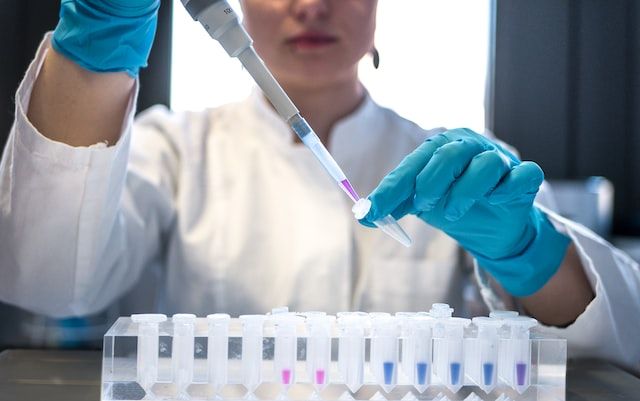
Yield is an important metric in chemical manufacturing because it can indicate the efficiency of a particular process or reaction, as well as the quality of the product.
Furthermore, low yields can be a sign of inefficiencies, impurities in the starting materials, or other factors that may need to be addressed to improve the process.
High yields, on the other hand, are desirable because they indicate a more efficient use of resources and a higher quality product.
Significance of Maximizing Yield in Chemical Manufacturing
Maximizing yield is a critical aspect of chemical manufacturing for several reasons:
Resource Efficiency:
Maximizing yield means that more of the starting materials are converted into the desired product, reducing waste and increasing resource efficiency. This can lead to cost savings and can also help reduce the environmental impact of the manufacturing process.
Economic Efficiency:
Maximizing yield also means that more product is produced for a given amount of starting material. This can increase the economic efficiency of the manufacturing process, as it can reduce the overall cost of production and increase profitability.
Product Quality:
Maximizing yield can also help maintain or improve the quality of the final product. In some cases, low yield can lead to impurities or unwanted by-products that can affect product quality. By maximizing yield, the number of unwanted impurities or by-products can be reduced, resulting in a higher quality final product.
Consistency:
Maximizing yield can help ensure consistent production of the desired product. This is particularly important in industries such as pharmaceuticals or food production, where consistency is critical for maintaining product safety and efficacy.
Sustainability:
Maximizing yield can also contribute to a more sustainable manufacturing process. By reducing waste and increasing resource efficiency, the overall environmental impact of the manufacturing process can be reduced.

Ultimately, maximizing yield is significant in chemical manufacturing because it can lead to increased resource and economic efficiency, improved product quality, consistent production, and a more sustainable manufacturing process.
Ways to Maximize Yield in Chemical Manufacturing
Maximizing yield is an important goal in chemical manufacturing, as it can lead to higher efficiency and profitability. Following, we’ve discussed some crucial ways to potentially maximize yield in chemical manufacturing. Let’s discuss:
1. Optimize Reaction Conditions
Optimizing reaction conditions is one way to potentially maximize yield in chemical manufacturing. By carefully selecting and optimizing these conditions, it may be possible to maximize the amount of product obtained.
Following, we've discussed some factors to consider when optimizing reaction conditions:
Temperature: The temperature at which a reaction occurs can impact yield. In some cases, increasing the temperature can increase the rate of the reaction and promote higher yield, while in other cases, lower temperatures may be more effective. Careful consideration of the reaction kinetics and the properties of the reactants and products can help determine the optimal temperature for a given reaction.
Pressure: Pressure can also impact reaction yield, particularly in gas-phase reactions. Increasing pressure can increase the concentration of reactants, leading to a higher yield. However, high pressure can also increase the cost of production and pose safety risks, so careful consideration of the optimal pressure is important.
Concentration: The concentration of reactants can impact reaction yield, particularly in reactions that are sensitive to stoichiometry. Careful control of the concentration of reactants can help maximize yield, while also avoiding waste or unwanted side reactions.
pH: The pH of a reaction can impact yield in reactions involving acids and bases. Careful control of the pH can help promote selectivity and maximize yield.
Time: The reaction time can also impact yield, particularly in reactions that have slow kinetics or require a longer reaction time to reach completion. Careful monitoring of the reaction progress can help determine the optimal reaction time to achieve maximum yield.
Reactant ratios: The ratio of reactants can impact yield, particularly in reactions that are sensitive to stoichiometry or have limited availability of one of the reactants. Careful control of the reactant ratios can help optimize yield.
Overall, optimizing reaction conditions to maximize yield requires careful consideration of the specific reaction, including the kinetics, thermodynamics, and properties of the reactants and products, as well as safety and cost considerations.
2. Purify Starting Materials
Purifying starting materials is an important step in maximizing yield in chemical manufacturing. Impurities in starting materials can interfere with reactions and decrease yield. By carefully purifying starting materials, it may be possible to increase yield.
Here are some ways to purify starting materials to potentially improve yield:
Use high purity starting materials: Using starting materials with a high degree of purity can help avoid impurities that can interfere with the reaction and decrease yield. Many suppliers offer high purity starting materials specifically for chemical manufacturing.
Remove impurities: In some cases, starting materials may contain impurities that can be removed using various purification methods. For example, distillation can be used to remove impurities from liquids, while chromatography can be used to separate impurities in complex mixtures.
Recrystallization: Recrystallization is a process that can be used to purify solid starting materials. In this process, the starting material is dissolved in a solvent and then allowed to slowly crystallize, leaving behind impurities.
Distillation: Distillation is a process that can be used to purify liquids by separating them from impurities based on differences in their boiling points.
Filtration: Filtration can be used to remove impurities from starting materials by passing the mixture through a filter, which traps the impurities and allows the purified material to pass through.
Overall, purifying starting materials is an important step in maximizing yield in chemical manufacturing. The specific method of purification will depend on the properties of the starting material and the impurities present.
Furthermore, careful selection of purification methods can help ensure that starting materials are pure and optimized for the reaction, potentially leading to higher yield.
3. Optimize Reaction Kinetics
Optimizing reaction kinetics is another way to potentially maximize yield in chemical manufacturing. The kinetics of a reaction, including the reaction rate and mechanism, can impact yield. By optimizing these factors, it may be possible to improve yield.
Here are some ways to optimize reaction kinetics:
Understand the reaction mechanism: A thorough understanding of the reaction mechanism can help identify potential rate-limiting steps or intermediates that can be targeted to optimize yield.
Use appropriate reaction conditions: As mentioned earlier, optimizing reaction conditions such as temperature, pressure, concentration, and pH can impact the reaction kinetics and thus the yield. Careful selection of these conditions can help maximize yield.
Use appropriate catalysts: Catalysts can help promote selectivity and increase reaction rate, leading to higher yield. Careful selection and use of appropriate catalysts can help optimize yield.
Use appropriate reaction kinetics models: Mathematical models of reaction kinetics can be used to simulate the reaction behavior and identify optimal conditions. These models can also help identify potential limitations in the reaction and suggest ways to optimize yield.
Control reactant addition rate: In some cases, the rate at which reactants are added can impact reaction kinetics and yield. Careful control of the reactant addition rate can help optimize yield.
Use appropriate agitation and mixing: Agitation and mixing can help improve reaction kinetics by promoting the contact between the reactants and catalysts. Appropriate mixing and agitation can help optimize yield.
Overall, optimizing reaction kinetics requires careful consideration of the specific reaction, including the reaction mechanism, properties of reactants and products, and safety and cost considerations. Careful selection and control of reaction conditions, catalysts, and other parameters can help maximize yield.
4. Utilizing Catalysts
Catalysts can increase the rate of a reaction and promote selectivity, leading to higher yields. By carefully selecting and using appropriate catalysts, it may be possible to improve yield.
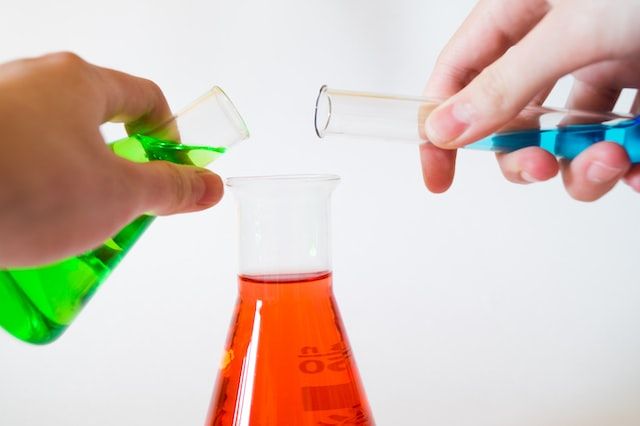
5. Recover and Recycle Reactants:
In some cases, reactants can be recovered and recycled, reducing the amount of waste and improving yield.
Using catalysts is a common way to maximize yield in chemical manufacturing. Here are some ways to use catalysts to optimize yield:
Select Appropriate Catalysts: The type of catalyst used can have a significant impact on yield. Careful selection of appropriate catalysts can help promote selectivity and increase reaction rate, leading to higher yield.
Optimize Catalyst Loading: The amount of catalyst used can impact yield. In some cases, higher catalyst loading can lead to higher yield, while in other cases, lower catalyst loading may be more effective. Careful optimization of catalyst loading can help maximize yield.
Control Catalyst Activation: In some cases, catalysts need to be activated before use to achieve maximum activity. The method of activation and the duration of activation can impact the activity of the catalyst, and thus the yield.
Remove Catalyst Poisons: Catalysts can be deactivated by impurities or reaction by-products, known as catalyst poisons. In some cases, removing these poisons can help restore catalyst activity and maximize yield.
Use Appropriate Reaction Conditions: As mentioned earlier, optimizing reaction conditions such as temperature, pressure, concentration, and pH can impact the reaction kinetics and thus the yield. Careful selection of these conditions can help maximize the activity and selectivity of the catalyst, leading to higher yield.
Regenerate or Replace Catalysts: In some cases, catalysts can lose activity over time due to deactivation or degradation. Regenerating or replacing catalysts can help restore activity and maintain high yield.
Overall, using catalysts is an effective way to maximize yield in chemical manufacturing. The specific method of using catalysts will depend on the properties of the reactants and products, the reaction mechanism, and the cost and safety considerations.
Moreover, careful selection and use of appropriate catalysts, as well as optimization of the reaction conditions, can help ensure high yield and efficiency in chemical manufacturing.
6. Use Appropriate Equipment
The equipment used in chemical manufacturing can impact yield. By using appropriate equipment, such as efficient mixing and separation technologies, it may be possible to maximize yield.
Using appropriate equipment is an important aspect of maximizing yield in chemical manufacturing. Here are some ways to use appropriate equipment to optimize yield:
Select Equipment that is Appropriate for the Reaction: The type of equipment used can impact the reaction rate, yield, and purity. Careful selection of equipment that is appropriate for the specific reaction can help maximize yield. Factors to consider include the size and shape of the vessel, the type and quality of materials used in construction, and the presence of any ancillary equipment such as heating or cooling systems.
Use Equipment with Appropriate Mixing and Agitation: Mixing and agitation are important for promoting the contact between the reactants and catalysts, which can help optimize yield. Appropriate mixing and agitation can be achieved through the use of equipment such as stirred tanks, impellers, or flow reactors.
Control Reaction Temperature and Pressure: The reaction temperature and pressure can impact the reaction kinetics and thus the yield. Using equipment such as reactors with precise temperature and pressure control can help optimize yield.
Ensure Proper Maintenance of Equipment: Equipment that is not maintained properly can lead to equipment failure or product contamination, which can decrease yield. Regular maintenance and cleaning of equipment can help ensure consistent and reliable performance.
Optimize Process Control: Using equipment with advanced process control capabilities, such as automated valves or process monitoring sensors, can help optimize yield and reduce the risk of errors or product variability.
Use Appropriate Downstream Processing Equipment: Downstream processing equipment such as filters, centrifuges, and distillation units can be used to separate and purify the product. Careful selection of appropriate downstream processing equipment can help maximize yield by minimizing product loss or contamination.
Overall, using appropriate equipment is an important aspect of maximizing yield in chemical manufacturing. The specific type of equipment used will depend on the reaction requirements, as well as cost and safety considerations. Careful selection and use of appropriate equipment can help ensure consistent and reliable performance and maximize yield.
Strategies to Maximize Yield in Chemical Manufacturing
There are several strategies that can be used to maximize yield in chemical manufacturing. These include:
Optimization of Reaction Conditions:
By optimizing reaction conditions, such as temperature, pressure, reactant concentrations, and reaction time, it is possible to increase the conversion of reactants to the desired product and reduce the formation of unwanted side products.
Use of Appropriate Catalysts:
Catalysts can significantly improve the efficiency of chemical reactions, by accelerating the rate of reaction and reducing the activation energy required. The use of appropriate catalysts can result in higher yields and reduced reaction times.
Purification of Starting Materials:
The use of purified starting materials can reduce impurities in the reaction mixture and increase the yield of the desired product.
Use of Appropriate Equipment:
The use of appropriate equipment, such as reactors, distillation columns, and separators, can help to optimize reaction conditions and improve the efficiency of the process.
Monitoring and Control of the Process:
By closely monitoring the process and making adjustments as necessary, it is possible to optimize the process conditions and maximize yield.
Process Simulation and Optimization:
The use of process simulation and optimization software can help to identify the optimal reaction conditions, equipment selection, and purification methods, and can reduce the time and costs associated with process development.
Use of ERP Systems:
Enterprise Resource Planning (ERP) systems can help to streamline the production process, reduce waste, and optimize the use of resources, leading to increased yield and reduced production costs.
By implementing these strategies, chemical manufacturers can improve the efficiency of their processes, reduce production costs, and increase the yield of the desired product, resulting in greater profitability and competitiveness in the industry.
Challenges that Arise when Trying to Achieve High Yields in Chemical Manufacturing
There are several challenges that can arise when trying to achieve high yields in chemical manufacturing. These challenges include:
Reaction Kinetics:
Chemical reactions are complex processes that can be influenced by various factors, such as temperature, pressure, and reactant concentration. Achieving high yields requires a thorough understanding of the reaction kinetics and the factors that influence the reaction rate.
Side Reactions:
Side reactions can occur when the reactants interact with each other to form unwanted products, reducing the yield of the desired product. Identifying and minimizing the occurrence of side reactions is critical to achieving high yields.
Impurities:
The presence of impurities, either in the starting materials or in the reaction mixture, can reduce the yield of the desired product. The removal of impurities can be challenging and may require specialized purification methods.
Equipment Limitations:
The equipment used in chemical manufacturing may have limitations that can impact the yield of the desired product. For example, the reaction conditions may need to be adjusted to accommodate the limitations of the equipment.
Cost Considerations:
Maximizing yield may require additional investments in equipment, purification methods, or process development. Balancing the costs associated with these investments against the potential benefits of increased yield can be challenging.
Safety Considerations:
Chemical reactions can be hazardous, and safety considerations must be taken into account when attempting to maximize yield. Specialized equipment and safety protocols may be required to minimize the risk of accidents.
Achieving high yields in chemical manufacturing is a complex and challenging process. It requires a thorough understanding of the reaction kinetics, the use of appropriate equipment and purification methods, and the identification and mitigation of potential challenges.
By addressing these challenges and implementing the appropriate strategies, chemical manufacturers can increase the yield of their desired products, leading to greater efficiency and competitiveness in the industry.
Some Common Methods to Measure Yield in Chemical Manufacturing
In chemical manufacturing, yield is the amount of desired product obtained from a chemical reaction, expressed as a percentage of the theoretical maximum yield. Yield can be measured in several ways, depending on the nature of the reaction and the properties of the product.
Following, we’ve discussed some common methods for measuring yield in chemical manufacturing:
Gravimetric Analysis:
In this method, the weight of the product is measured and compared to the expected yield, which is calculated from the stoichiometry of the reaction. The difference between the measured weight and the expected yield is used to calculate the actual yield.
Titration:
In some reactions, the product or a by-product may be acidic or basic, and titration can be used to determine the amount of the product produced. For example, in the production of acetic acid, the amount of product can be measured by titration with a standard solution of sodium hydroxide.
Spectroscopic Analysis:
Spectroscopic techniques, such as UV-Vis, IR, or NMR, can be used to measure the concentration of the product in a sample. By comparing the concentration to the expected concentration, the yield can be calculated.
Chromatography:
Chromatographic techniques, such as gas chromatography (GC) or high-performance liquid chromatography (HPLC), can be used to separate and quantify the components of a reaction mixture. The amount of the product can be determined by integrating the peak corresponding to the product on the chromatogram.
Mass Spectrometry:
Mass spectrometry can be used to measure the mass of the product and to identify any impurities or by-products. By comparing the measured mass to the expected mass, the yield can be calculated.
In summary, the method used to measure yield in chemical manufacturing depends on the nature of the reaction and the properties of the product. By accurately measuring the yield, it is possible to optimize the reaction conditions, improve efficiency, and ensure that the product meets the required specifications.
Role of Modern Technologies and Tools in Optimizing Chemical Processes
Modern technologies and tools play a crucial role in optimizing chemical processes in a number of ways, including:
Process Modeling and Simulation:
Modern software tools can simulate chemical processes, enabling engineers and scientists to optimize process parameters, equipment selection, and overall performance. This helps to reduce the number of experimental trials needed to develop a new process, reducing the time and cost associated with process development.
Artificial Intelligence and Machine Learning:
AI and machine learning algorithms can be used to analyze process data in real-time, identify patterns and anomalies, and optimize the process parameters to maximize yield, reduce costs, and minimize environmental impact.

Sensors and Monitoring Systems:
Real-time monitoring of chemical reactions using sensors and other monitoring systems can help to optimize the process parameters, ensuring that the reaction stays within the desired range and reducing the risk of undesirable side reactions.
Robotics and Automation:
Automation and robotics can be used to streamline and optimize chemical processes, increasing throughput and reducing the time and cost associated with manufacturing.
Advanced Materials and Catalysts:
The development of advanced materials and catalysts can improve the efficiency of chemical reactions, leading to higher yields and reduced waste. Modern techniques such as nanotechnology and 3D printing are being used to create materials with unique properties and enhanced performance.
Enterprise Resource Planning (ERP) Systems:
ERP systems can be used to manage and optimize the entire chemical manufacturing process, from sourcing raw materials to delivering the final product. By providing real-time visibility into the process and enabling efficient allocation of resources, ERP systems can help to optimize yield, reduce costs, and improve overall efficiency.
Overall, modern technologies and tools are playing an increasingly important role in optimizing chemical processes. They are enabling scientists and engineers to develop new and innovative processes, optimize existing processes, and improve the overall efficiency of chemical manufacturing.
As technology continues to evolve, it is likely that these tools and techniques will become even more advanced, leading to further improvements in the chemical manufacturing industry.
Frequently Asked Questions Related to Maximizing Yield in Chemical Manufacturing
Following, we’ve discussed some frequently asked questions related to maximizing yield in chemical manufacturing:
Que 1: What does yield mean in chemical manufacturing?
Ans: Yield refers to the amount of product that is obtained from a chemical reaction, expressed as a percentage of the theoretical maximum yield.
Que 2: Why is it important to maximize yield in chemical manufacturing?
Ans: Maximizing yield is important because it leads to increased resource and economic efficiency, improved product quality, consistent production, and a more sustainable manufacturing process.
Que 3: What are some factors that can affect yield in chemical manufacturing?
Ans: Several factors can affect yield in chemical manufacturing, including reaction conditions, impurities in starting materials, catalysts, equipment, and reaction kinetics.
Que 4: How can reaction conditions be optimized to maximize yield?
Ans: Reaction conditions can be optimized by adjusting factors such as temperature, pressure, reaction time, and concentration of reactants.
Que 5: What are some common catalysts used in chemical manufacturing?
Ans: Catalysts are widely used in chemical manufacturing to accelerate chemical reactions and improve product yield. Common catalysts used in chemical manufacturing include enzymes, acids, bases, and transition metal complexes.
Here are some common catalysts used in chemical manufacturing discussed in detail:
Enzymes: Enzymes are biological catalysts that are commonly used in the production of pharmaceuticals, food products, and biofuels.
Acids: Acids such as sulfuric acid and hydrochloric acid are used as catalysts in a variety of chemical reactions, including the production of fertilizers, plastics, and detergents.
Bases: Bases such as sodium hydroxide and potassium hydroxide are used as catalysts in the production of soaps, detergents, and other chemical products.
Transition metal complexes: Transition metal complexes such as palladium, platinum, and rhodium are widely used in the production of specialty chemicals, pharmaceuticals, and fine chemicals.
Zeolites: Zeolites are porous materials that are commonly used as catalysts in the production of petrochemicals and other chemical products.
Homogeneous catalysts: Homogeneous catalysts such as metal complexes and organocatalysts are used in a wide range of chemical reactions, including polymerization, oxidation, and hydrogenation.
Heterogeneous catalysts: Heterogeneous catalysts such as metal oxides, zeolites, and activated carbon are widely used in the production of chemicals and petrochemicals, as well as in environmental applications such as catalytic converters for automobiles.
These are just a few examples of the many catalysts used in chemical manufacturing. The choice of catalyst depends on the specific reaction and desired outcome.
Que 6: How can an ERP system help maximize yield in chemical manufacturing?
Ans: An ERP system can help maximize yield in chemical manufacturing by optimizing production planning, monitoring quality control, ensuring regulatory compliance, and providing real-time data and analytics for process improvements.
Here are some ways an ERP system can help maximize yield in chemical manufacturing:
Process automation: An ERP system can automate several processes, such as inventory control, purchase orders, and production scheduling. This can help reduce errors, minimize delays, and optimize the use of resources, ultimately leading to improved yield.
Real-time data and analytics: An ERP system can provide real-time data and analytics on various aspects of the manufacturing process, such as production rates, resource utilization, and yield rates. This can help identify areas where improvements can be made to increase yield.
Production planning: An ERP system can help optimize production planning by providing visibility into the availability of raw materials and equipment, production schedules, and resource utilization. This can help ensure that production is aligned with demand, and that resources are utilized in the most efficient way possible.
Quality control: An ERP system can help ensure quality control by monitoring the quality of raw materials, intermediate products, and final products. This can help identify quality issues and take corrective action before they impact yield.
Regulatory compliance: An ERP system can help ensure regulatory compliance by tracking and managing data related to safety, health, and environmental compliance. This can help minimize risks associated with non-compliance, such as production downtime, fines, and damage to the company's reputation.
Que 7: What is the relationship between yield and purity in chemical manufacturing?
Ans: In chemical manufacturing, yield and purity are closely related. Yield refers to the amount of desired product obtained from a chemical reaction, expressed as a percentage of the theoretical maximum yield.
Purity, on the other hand, refers to the extent to which the product is free from impurities, contaminants, or other unwanted substances.
Maximizing yield is important because it leads to increased resource and economic efficiency, but it is also important to ensure that the product is pure and meets the required specifications. Low yields can result in impurities or unwanted by-products that can affect product quality. Therefore, a high yield does not necessarily guarantee a pure product.
To achieve high purity, it is necessary to purify the product and remove impurities that may have formed during the reaction. Techniques such as distillation, chromatography, and recrystallization can be used to purify the product and increase purity.
By maximizing yield and minimizing impurities, the product quality can be improved, resulting in a higher value and more marketable product.
In summary, while yield and purity are separate parameters, they are related in chemical manufacturing, and optimizing both parameters is essential for achieving a successful and sustainable production process.
Que 8: How can starting materials be purified to maximize yield in chemical manufacturing?
Ans: Starting materials can be purified by using techniques such as distillation, chromatography, and recrystallization to remove impurities and increase purity, ultimately leading to improved yield.
Que 9: How can appropriate equipment be used to maximize yield in chemical manufacturing?
Ans: The appropriate equipment can play a significant role in maximizing yield in chemical manufacturing. Here are some ways that appropriate equipment can be used to maximize yield:
Reactor type and design: Choosing the appropriate reactor type and design can help maximize yield. For example, a continuous-flow reactor can improve yield compared to a batch reactor by maintaining optimal reaction conditions, reducing reaction times, and minimizing the formation of unwanted by-products.
Temperature and pressure control: The appropriate equipment can enable precise temperature and pressure control, which can help optimize reaction conditions and increase yield. For example, a jacketed reactor can provide precise temperature control, and a pressurized vessel can allow for high-pressure reactions.
Mixing and agitation: Proper mixing and agitation can help improve reaction efficiency and increase yield. The appropriate equipment, such as a stirrer, impeller, or jet mixer, can ensure that the reactants are evenly distributed, and prevent localized overheating or cooling.
Separation and purification: Appropriate equipment can help ensure that the desired product is separated and purified efficiently, reducing the number of impurities and maximizing yield. For example, distillation columns, filtration systems, and centrifuges can be used to remove impurities and recover the desired product.
Monitoring and control: Appropriate equipment can be used to monitor and control the reaction, allowing for adjustments to be made in real-time to optimize yield. For example, in-line sensors can be used to measure temperature, pressure, and pH levels, and process control systems can be used to adjust parameters to maintain optimal reaction conditions.
Que 10: How can yield be measured in chemical manufacturing?
Ans: Yield can be measured by calculating the ratio of the actual amount of product obtained to the theoretical maximum yield, expressed as a percentage.
Que 11: What happens if the Yield is Low in Chemical Manufacturing?
Ans: A low yield in chemical manufacturing means that the amount of the desired product obtained from a reaction is less than expected, based on the stoichiometry of the reaction.
Furthermore, a low yield can be caused by various factors, such as incomplete conversion of reactants, formation of unwanted side products, or loss of product during purification.
Following, we’ve discussed some crucial potential consequences of a low yield in chemical manufacturing. Let’s check them out:
Increased production costs: A low yield means that more raw materials are needed to produce the same amount of product, which can increase production costs.
Reduced profitability: A low yield can reduce the profitability of a chemical process, as it means that less product is available to sell.
Impurity accumulation: A low yield can result in impurities accumulating in the product, which can affect its quality and performance.
Environmental impact: A low yield can result in more waste products being generated, which can have negative environmental impacts.
Lower product quality: A low yield can result in the product having lower purity, which can affect its properties and performance. This can be particularly important in industries such as pharmaceuticals, where purity is critical to ensure the safety and efficacy of the product.
To address a low yield, it is necessary to identify the root cause and to take appropriate steps to optimize the reaction conditions, modify the purification process, or improve the efficiency of the process.
By doing so, it is possible to increase yield, reduce production costs, and ensure that the product meets the required specifications.
Wrapping Up
The conclusion for maximizing yield in chemical manufacturing is to ensure the proper operation and maintenance of the production equipment and processes, as well as to use a quality control program to monitor and adjust the process parameters in order to optimize the yield.
Other important factors to consider are the selection of appropriate raw materials, the optimization of reaction conditions, and the implementation of appropriate safety protocols. Additionally, understanding the chemistry of the reaction and the reaction mechanism is essential in achieving higher yields.
Finally, predictive analytics can be used to identify potential problems before they occur and to optimize the process, as well as to enable real-time monitoring and control of the chemical manufacturing process.
How Deskera Can Assist You?
Deskera's integrated financial planning tools allow investors to better plan their investments and track their progress. It can help investors make decisions faster and more accurately.

Deskera Books enables you to manage your accounts and finances more effectively. Maintain sound accounting practices by automating accounting operations such as billing, invoicing, and payment processing.
Deskera CRM is a strong solution that manages your sales and assists you in closing agreements quickly. It not only allows you to do critical duties such as lead generation via email, but it also provides you with a comprehensive view of your sales funnel.
Deskera People is a simple tool for taking control of your human resource management functions. The technology not only speeds up payroll processing but also allows you to manage all other activities such as overtime, benefits, bonuses, training programs, and much more. This is your chance to grow your business, increase earnings, and improve the efficiency of the entire production process.
Final Takeaways
We've arrived at the last section of this guide. Let's have a look at some of the most important points to remember:
- In chemical manufacturing, yield refers to the amount of product obtained at the end of a chemical reaction or process, expressed as a percentage of the theoretical maximum amount that could have been produced.
- Maximizing yield means that more of the starting materials are converted into the desired product, reducing waste and increasing resource efficiency. This can lead to cost savings and can also help reduce the environmental impact of the manufacturing process.
- Maximizing yield can also help maintain or improve the quality of the final product. In some cases, low yield can lead to impurities or unwanted by-products that can affect product quality. By maximizing yield, the number of unwanted impurities or by-products can be reduced, resulting in a higher quality final product.
- By optimizing reaction conditions, such as temperature, pressure, reactant concentrations, and reaction time, it is possible to increase the conversion of reactants to the desired product and reduce the formation of unwanted side products.
- Enterprise Resource Planning (ERP) systems can help to streamline the production process, reduce waste, and optimize the use of resources, leading to increased yield and reduced production costs.
- Using catalysts is an effective way to maximize yield in chemical manufacturing. The specific method of using catalysts will depend on the properties of the reactants and products, the reaction mechanism, and the cost and safety considerations.
- To achieve high purity, it is necessary to purify the product and remove impurities that may have formed during the reaction. Techniques such as distillation, chromatography, and recrystallization can be used to purify the product and increase purity.
- Chromatographic techniques, such as gas chromatography (GC) or high-performance liquid chromatography (HPLC), can be used to separate and quantify the components of a reaction mixture. The amount of the product can be determined by integrating the peak corresponding to the product on the chromatogram.
Related Articles
